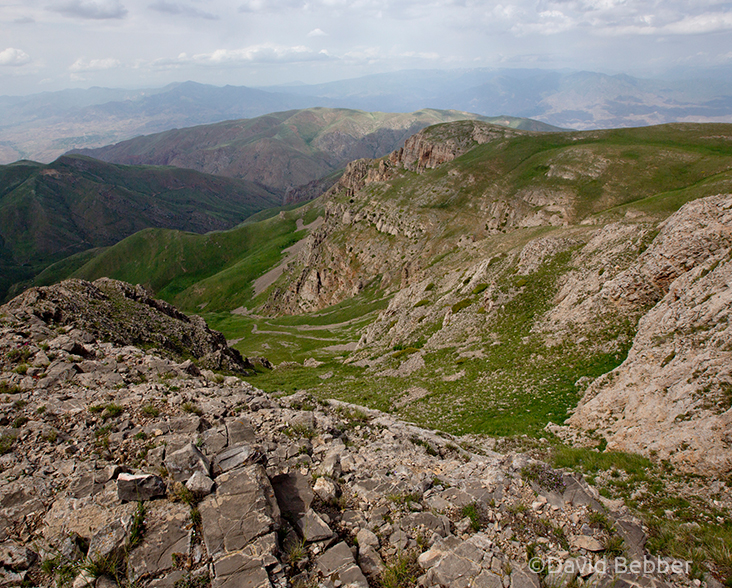Armenian Mouflon
Species Data
Class: Mammalia
Order: Cetartiodactyla
Family: Bovidae
Scientific Name: Ovis gmelini gmelini
IUCN Red List status: Near Threatened
Description
The Armenian Mouflon is a subspecies of the Mouflon, a wild sheep thought to be the ancestor of all domestic sheep breeds in the world today. Physical characteristics are similar to those of other Mouflon, reaching around 90cm in shoulder height and 50kg in body weight for males or 35kg for females. Its short-haired coat is reddish to dark brown in colour, while the horns of mature rams are large and curved up to 85cm.
Behaviour
Mouflon ecology is not widely understood but herds are known to be gregarious, non-territorial and promiscuous. In Armenia, where WLT partner FPWC operates, the rutting season lasts from late November to early December, with lambs (usually twins) born in mid–May to early June.


Habitat
The Armenian Mouflon inhabits mountainous steppe and grassland habitats with hilly, undulating terrain that provides suitable grazing. It is restricted to the southern Caucasus region, including the Zangezur Mountains of southern Armenia and Azerbaijan’s Nakhichevan exclave, as well as the Aiotsdzor, Bargushat and Urts ridges in Armenia. In northwestern Iran, the subspecies can be found in the western Alborz Mountains and northern Zagros Mountains.
Threats and Conservation
The IUCN’s estimate of the mouflon population in Armenia and Azerbaijan stands at 400-500 animals, with no fewer than 250 in Armenia. Although this estimate is “conservative”, it remains evident of a significant decline from the 1960s when the two countries were home to 1,750 animals. Exact numbers from Iran are unavailable as surveys do not distinguish between Mouflon, Urial (another wild sheep) and hybrid animals.
Across its range, the greatest threat to the Armenian Mouflon comes from its modern ancestors. Domestic sheep compete with mouflon for food and can displace them from foraging grounds, with herders and their dogs acting as another source of disturbance. According to the IUCN, this disturbance may be more detrimental for Mouflon than forage competition. Livestock may also pose a further risk by transmitting diseases to the wild Mouflon population. Poaching, mining, habitat destruction and land encroachment pose additional threats.
In the Red Data Book of Armenia, the Armenian Mouflon is described as one of the most extinction-prone animals in the country. Thankfully, it now finds over 30,000 ha of protected habitat at the Caucasus Wildlife Refuge, managed by FPWC. The mountainous steppe, grasslands and Juniper forests here provide ample foraging grounds for the threatened subspecies, while FPWC rangers patrol for poachers and engage with local communities to reduce human-wildlife conflict. A new project led by WLT and FPWC aims to plant 700,000 native trees here between 2023 and 2027, restoring 300 ha of degraded habitat along a migratory route for Armenian Mouflon and other large mammals like Bezoar Goat, Caucasian Leopard and Syrian Brown Bear.
Protected by these WLT Projects
References
MacDonald, D.; Barret, P. (1993). Mammals of Britain & Europe. Vol. 1. London: HarperCollins. pp. 220–221. ISBN 978-0-00-219779-3.
